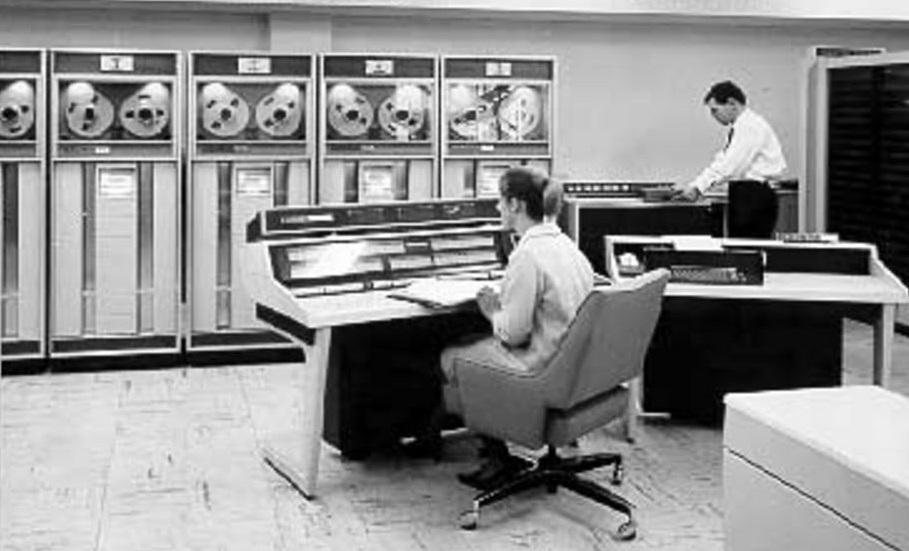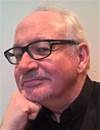Preamble
The Australian Computer Society (ACS) was formed 50 years ago, when the various state computer societies joined forces.
To mark the occasion, the ACS has initiated a heritage project to honour the many individuals who have contributed to the growth of the ICT profession in Australia.
At the heart of the project is a history of computing in Australia. It is not just a history of the ACS, but the history of a profession.
Australia has the longest computing history of any country, excepting the US and the UK, and CSIRAC in the Museum of Victoria is the oldest computer still in existence.
Chapter 13: Control Data Australia (part II)
Trevor Robinson was born in Perth in 1922 and grew up on a remote farming property in the north of Western Australia. He attended Wesley School in Perth and was studying science at the University of Western Australia when World War II began.
In 1942 he joined the Royal Australian Air Force, where he studied radar (with John Bennett) at Sydney University, before becoming Commanding Officer of two radar stations, one in Geraldton and one in New Guinea.
After the war, he completed his degree and was awarded first class honours in physics. He joined the Weapons Research Establishment and was sent to England to work on the design and development of new computer systems, including the top secret ‘Beast’, which he helped install in Melbourne in 1959.
Robinson believed the TRW and Philco machines were unsuitable for the Australian market. He had heard good reports of CDC and recommended that distributor Heymanson seek the Australian distributorship. He then visited CDC head office in Minneapolis to convince William Norris of the viability of an operation in Australia. He was helped by the fact that a CDC vice-president, John Lacey, had been a colleague of his when he had worked in England.
Heymanson installed a CDC 160A in Bank house in central Melbourne, and in 1962 sold its first machine, another 160A, to the Post-Master General (PMG) Research Laboratories in Lonsdale Street, Melbourne.
On 17 May 1963 Robinson established Control Data Australia as a wholly owned subsidiary of the US corporation. The first office was at 474 St Kilda Road in Melbourne, in two converted apartments of a residential block built in the early 1930s.
Impressive sales
While E.L. Heymanson was still the distributor for CDC, Robinson worked hard on two big deals. The sales were announced on 19 June, barely a month after the formation of the Australian subsidiary. One sale was of a Model 3600, a 3300 and six 3200s to the Bureau of Census and Statistics (the forerunner to the Australian Bureau of Statistics), and the other, for a 3600 and three 3200s, to the CSIRO.
The Census deal was worth £2,097,000 and the CSIRO deal £1,500,000, at a time when the average weekly wage in Australia was just £20 ($40). They were by far the largest computer sales ever made in Australia. The deals were announced simultaneously by both Treasurer Harold Holt, and the Minister for Education and Science, Senator John Gorton – both of whom were later to become Prime Minister.
The sales marked Control Data’s arrival in Australia, and were regarded as a ‘surprise choice’. The sale was notable for a number of reasons. Its sheer size was one thing, but the fact that the contracts had been awarded to a company that was barely known in Australia, and had previously sold only two small computers, was remarkable.
But even more noteworthy is the fact that CDC had only been persuaded to make the smaller 24-bit models in the 3000 series (the 3100, the 3200 and the 3300) at Trevor Robinson’s insistence, after he said he could sell at least 15 of them in Australia. His powers of persuasion were remarkable.
Trevor Robinson himself says that he sold the smaller 3000s to Census and CSIRO on the basis of rumours within CDC that a lower-end machine, codenamed the 160Z, would be produced, and that after he made the sales, the company had no option but to announce and produce them.
He had allies on the staff at CDC corporate, but says he received a ‘drubbing’ over going out on a limb and selling the 3200s when they did not yet exist. But CDC swung into action, and the low-end 3000 series machines were to become very successful worldwide.
The 3200s were not to become available, even in the US, until May 1964. The 3600s began shipping in June 1963, around the time the Australian deals were announced. The Census and CSIRO 3600s arrived in Australia in early 1964, with CSIRO’s machine installed at the agency’s new purpose-built Computer Research Section laboratory in the Canberra suburb of Black Mountain.
CDA makes Canberra home
After CDA made the sales to CSIRO and Census, it became one of the first computer companies to open an office in Canberra. Most computer companies who came to the national capital were to base themselves in Civic, or along Northbourne Avenue, but CDA chose a red brick, two-storey house at 122 Empire Circuit, Yarralumla, in the diplomatic district. It became known as ‘The Embassy’.
CDA purchased the building, next door to the Dutch embassy and within two blocks of the US, West German and Israeli missions. CDC had a policy of leasing floor space where possible, but suitable office space in Canberra was scarce at the time and the Yarralumla building was available at a reasonable price. The Canberra office of CDA was to remain in The Embassy until 1971, when the National Capital Development Commission demanded that CDA cease running a business in a residential area.
Many more sales were to follow for CDA. Monash University ordered a 3200 not long after the Census and CSIRO deals were announced, and the Victorian Totalizator Agency Bureau (TAB) ordered twin 3100s and twin 3200s. These were named after the racehorse Carbine.
In 1968, the TAB ordered five 1700s for a major project to connect all agencies around the state, a project named after another famous racehorse, Rimfire. The Rimfire contract saw CDA develop a significant manufacturing facility in the Melbourne suburb of Cheltenham to produce the branch office RIOTs (Remote Input Output Terminals).
By 1969, CDA had sold dozens of machines in Australia. Its achievements were impressive, but it was not to last. By 1970, IBM’s S/360 had become the dominant computer architecture in Australia, and in that year Trevor Robinson left the company, correctly assessing that its long-term outlook was ‘not good’. But, like its US parent, it was to survive into the 1980s.
Previously published:
Chapter 12: Control Data Australia (part I)
Chapter 11: The Australian Computer Society
Chapter 10: Five Computer Societies
Chapter 9: Australian made, Australian designed
Chapter 8: Australia's Computer Industry in 1962
Chapter 5: SILLIAC and the Snowy Mountains Scheme
Chapter 3: Harry Messel and the birth of SILLIAC
Chapter 2: The first Australian Computer Conference
Chapter 1 -The start of Australia’s computing history
Veteran ICT journalist Graeme Philipson is researching and writing the Heritage Project book, which is due for release on the 50th anniversary of the formal incorporation of the ACS, on 3 October 2017.
The project also involves the creation of a ‘virtual museum’, cataloguing hardware and other artefacts, and collecting and curating documents on the history of the industry, including oral histories of as many people as possible.
Please get in touch with Graeme if you would like to contribute, at [email protected]
Do you have early memories of the ICT industry in Australia? Help us make history by sending us your story! Record or write your memories to be included in our historic ACS Heritage Project. Details here.










